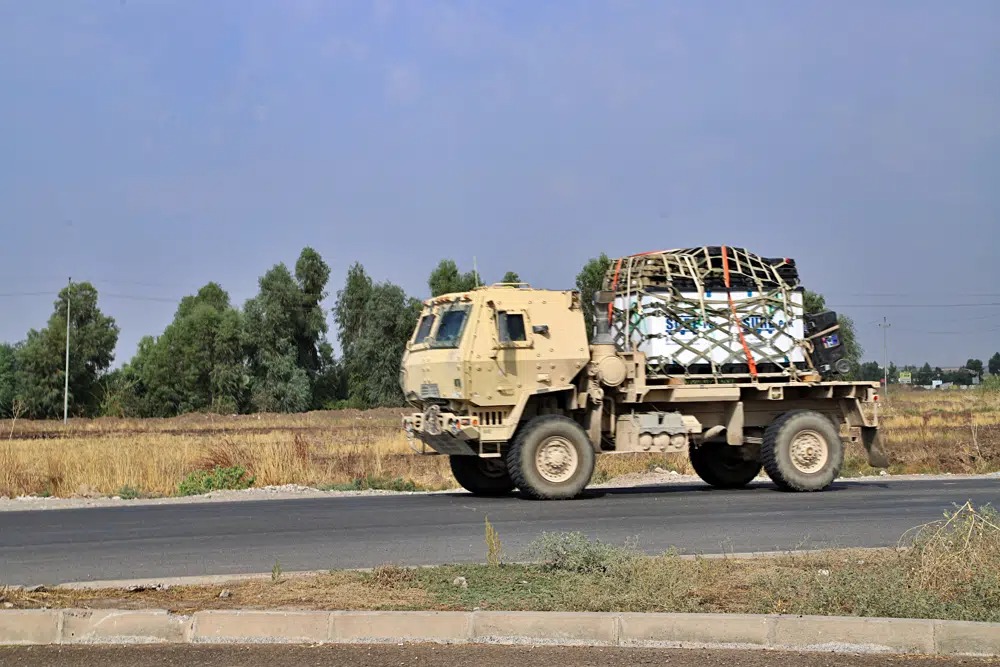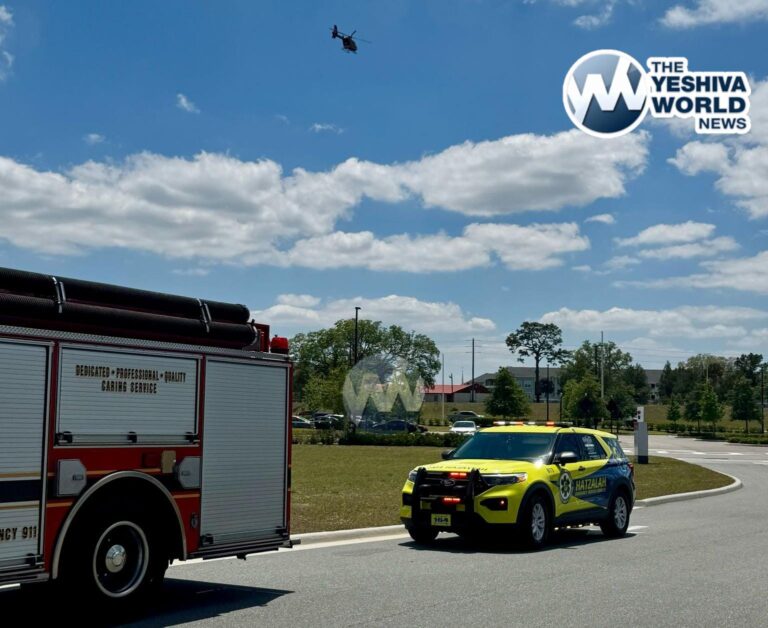Twenty years after the U.S. invaded Iraq — in blinding explosions of shock and awe — American forces remain in the country in what has become a small but consistent presence to ensure an ongoing relationship with a key military and diplomatic partner in the Middle East.
The roughly 2,500 U.S. troops are scattered around the country, largely in military installations in Baghdad and in the north. And while it is a far cry from the more than 170,000 U.S. forces in Iraq at the peak of the war in 2007, U.S. officials say the limited — but continued — troop level is critical as a show of commitment to the region and a hedge against Iranian influence and weapons trafficking.
A look at America’s evolving role in Iraq:
HOW DID IT START?
The U.S. invaded Iraq in March 2003 in what it called a massive “shock and awe” bombing campaign that lit up the skies, laid waste to large sections of the country and paved the way for American ground troops to converge on Baghdad. The invasion was based on what turned out to be faulty claims that Saddam Hussein had secretly stashed weapons of mass destruction. Such weapons never materialized.
Saddam was toppled from power, and America’s war shifted the country’s governing base from minority Arab Sunnis to majority Shiites, with Kurds gaining their own autonomous region. While many Iraqis welcomed Saddam’s ouster, they were disappointed when the government failed to restore basic services and the ongoing battles instead brought vast humanitarian suffering.
Resentment and power struggles between the Shiites and the Sunnis fueled civil war, leading ultimately to America’s complete withdrawal in December 2011. The divide was a key factor in the collapse of the nation’s police and military forces when faced with the Islamic State insurgency that swept across Iraq and Syria in 2014.
THE U.S. RETURNS
The rise of the Islamic State group — its roots were in al-Qaida affiliates — and its expanding threat to the U.S. and allies across Europe sent the U.S. back into Iraq at the invitation of the Baghdad government in 2014. Over that summer and fall, the U.S.-led coalition launched airstrike campaigns in Iraq and then Syria, and restarted a broad effort to train and advise Iraq’s military.
The coalition’s train and advise mission has continued, bolstered by a NATO contingent, even after the Islamic State group’s campaign to create a caliphate was ended in March 2019.
The roughly 2,500 troops deployed to Iraq live on joint bases with Iraqi troops, where they provide training and equipment. That troop total, however, fluctuates a bit, and the Pentagon does not reveal the number of U.S. special operations forces that routinely move in and out of the country to assist Iraqi forces or travel into Syria for counterterrorism operations.
“Iraq is still under pressure from ISIS,” said retired Marine Corps Gen. Frank McKenzie, who led U.S. Central Command and served as the top U.S. commander for the Middle East from 2019 to 2022. “We still help them continue that fight. We’ve done a lot of things to help them improve the control of their own sovereignty, which is of very high importance to the Iraqis.”
WHY THE U.S. PRESENCE CONTINUES
The much-stated reason for the continued U.S. troop presence is to help Iraq battle the remnants of the Islamic State insurgency and prevent any resurgence.
But a key reason is Iran.
Iran’s political influence and militia strength in Iraq and throughout the region has been a recurring security concern for the U.S. over the years. And the presence of American forces in Iraq makes it more difficult for Iran to move weapons across Iraq and Syria into Lebanon, for use by its proxies, including the Lebanese Hezbollah, against Israel.
The same is true for the U.S. troop presence around the al-Tanf garrison in southeastern Syria, which is located on a vital road that can link Iranian-backed forces from Tehran all the way to southern Lebanon — and Israel’s doorstep. In both Iraq and Syria, U.S. troops disrupt what could be an uncontested land bridge for Iran to the eastern Mediterranean.
U.S. troops in Iraq also provide critical logistical and other support for American forces in Syria, who partner with the Kurdish-led Syrian Democratic Forces battling the Islamic State group. The U.S. conducts airstrikes and other missions targeting IS leaders, and also supports the SDF in guarding thousands of captured IS fighters and family members imprisoned in Syria.
Military leaders successfully beat back efforts by then-President Donald Trump to pull all troops out of both Syria and Iraq. They argued that if anything were to happen in Syria that endangered U.S. forces, they would need to be able to quickly send troops, equipment and other support from Iraq.
In a recent visit to Baghdad to meet with Iraqi leaders, Defense Secretary Lloyd Austin said U.S. forces are ready to remain in Iraq, in a noncombat role, at the invitation of the government.
“We’re deeply committed to ensuring that the Iraqi people can live in peace and dignity, with safety and security and with economic opportunity for all,” he said.
IRAQ BY THE NUMBERS
By the time Washington withdrew its last combat troops in December 2011, tens of thousands of Iraqi civilians were dead, along with 4,487 American troops.
More than 3,500 troops were killed in hostile action and nearly 1,000 died in noncombat deaths from 2003 to 2011. More than 32,000 troops were wounded in action; tens of thousands more have also reported illnesses to the Department of Veterans Affairs that are believed to be linked to toxic exposure from the burn pits in Iraq. Legislation signed into law by the Biden administration has expanded the number of those veterans who will qualify for lifetime care or benefits due to that exposure.
From 2003 through 2012, the United States provided $60.64 billion to fund Iraq’s security forces and civilian reconstruction, according to the Special Inspector General for Iraq Reconstruction. Of that total, $20 billion went to funding, equipping, providing uniforms for and training Iraq’s security forces.
There were roughly 100,000 contractors each year in Iraq supporting U.S. forces and the U.S. mission from 2007 until 2010, according to the Congressional Research Service. As of late last year, there were about 6,500 contractors supporting U.S. operations in Iraq and Syria, according to U.S. Central Command.
(AP)












One Response
This should serve as a lesson to the so-called State of “Israel.” If the most powerful nation on Earth cannot conclusively defeat a sovereign nation in the Middle East, all the more so will the warmongering Zionist army of shmad not be able to defeat Iran in any military provocation that is a severe violation of the Shalosh Shevuos רחמנא ליצלן.
TO ALL THE BIBI-LOVERS ON YWN – ARE YOU LISTENING??!!